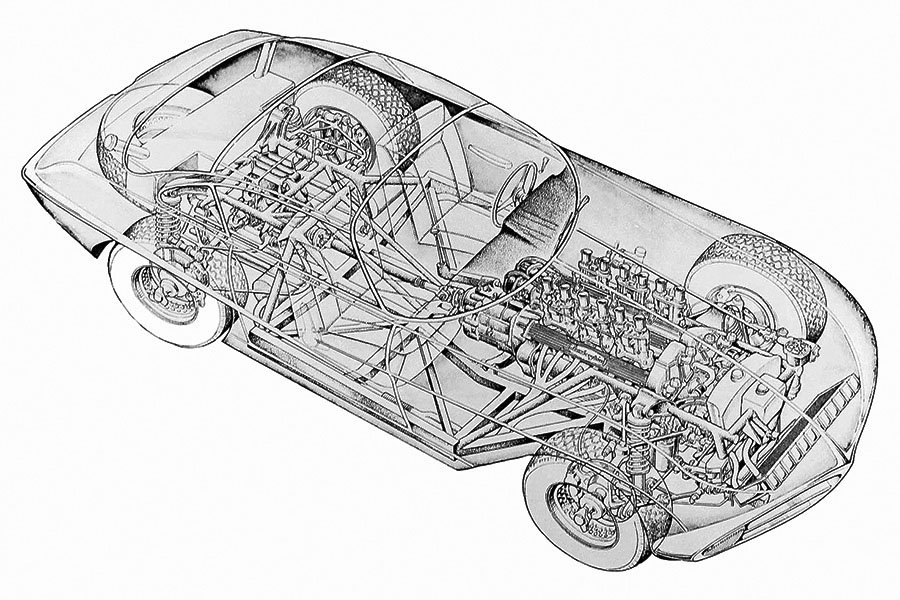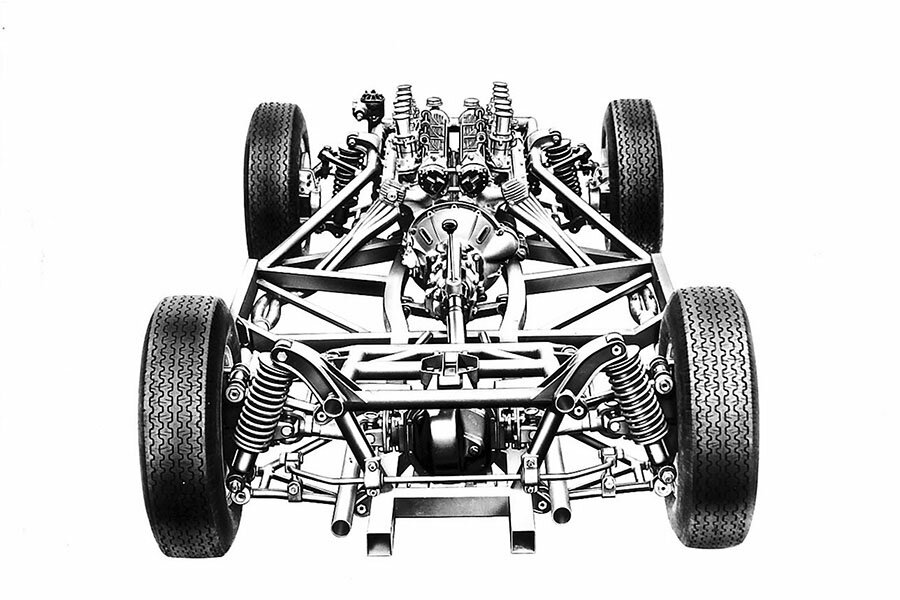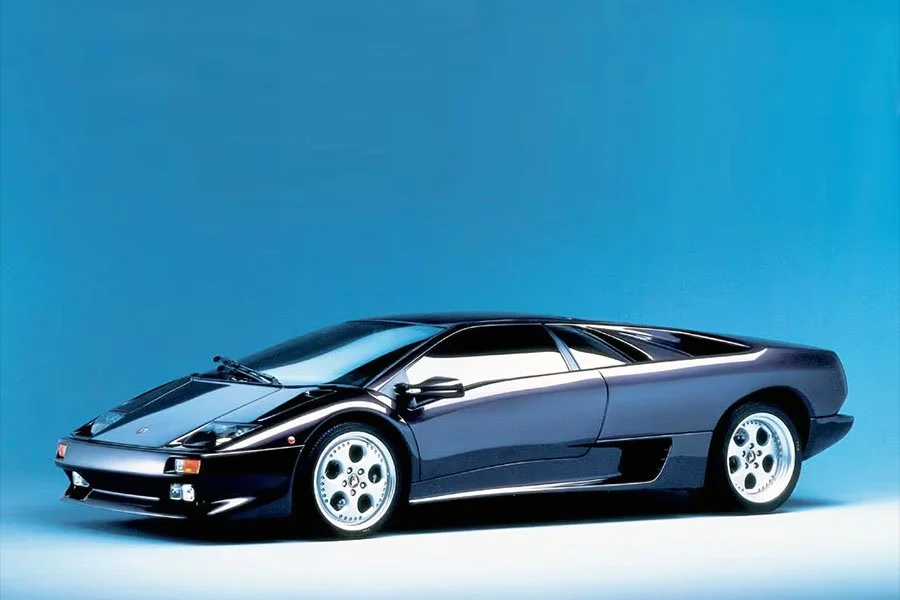Guide: Dream Becomes Reality - a Historical & Technical Appraisal of the Lamborghini 350 GTV
/BACKGROUND
Ferruccio Lamborghini was born into a farming family in 1918. After attending the local technical college, he served as a wartime mechanic and was posted to Rhodes which fell to the British in 1943.
After hostilities ended, Lamborghini began to cobble together tractors from discarded parts found in scrap yards. By 1950, Lamborghini Trattori had become one of the most important agricultural vehicle producers in Italy with an unusually high proportion of components manufactured in-house.
Further expansion into heaters and air-conditioners netted Ferruccio Lamborghini a second fortune.
Part of this was spent on a small fleet of exotic motorcars.
Dissatisfied with the Ferraris he owned and his treatment at Maranello, Ferruccio Lamborghini decided to create his own auto maker and build something finer, faster and more reliable than anything to wear the Cavallino Rampante.
He enlisted Giotto Bizzarrini to design a chassis and engine from scratch. The bodywork was entrusted to Franco Scaglione.
Soon after work began on the new 350 GTV, Lamborghini purchased enough land for a 500,000 sq. ft. factory at Sant’Agata Bolognese.
While construction of the new Automobili Lamborghini facility took place, the 350 GTV was assembled in Ferruccio Lamborghini’s tractor factory at Cento.
Having most famously been responsible for the seminal 250 GTO during his time at Ferrari, Giotto Bizzarrini had left Maranello in the famous 1961 palace revolt. Although the Tuscan engineer wanted to build his own cars, he gladly accepted the lucrative commission from Lamborghini and was no doubt attracted by the requirement that his creation had to be technically superior to anything on offer from Ferrari.
CHASSIS
The Bizzarrini-designed Lamborghini chassis (numbered 0001) was a complex arrangement of square steel tubes fabricated in Modena by Giorgio Neri & Luciano Bonacini (Nembo).
The wheelbase measured 2450mm and track dimensions were an identical 1380mm at either end.
Fully independent suspension was state-of-the-art: double wishbones, coil springs and telescopic shocks were used at each corner along with an anti-roll bar for both axles.
Servo-assisted Girling disc brakes were fitted all round (292mm diamater up front and 274mm at the rear).
The 15 x 6.5-inch Borrani centre-lock wire wheels came shod with Pirelli Cinturato tyres.
An 80-litre fuel tank with twin filler necks was located behind the rear axle along with a full size spare wheel.
ENGINE / TRANSMISSION
Rather than take the easy option and simply look for an outside engine supplier (which would probably have meant using a big block American V8), Ferruccio Lamborghini insisted on building his own Ferrari-beating V12 from scratch.
Bizzarrini created an all-alloy 3.5-litre 60° V12 with two valves per cylinder, dry-sump lubrication and dual overhead camshafts. By contrast, it would be three years before a dual overhead cam Ferrari road car was launched (the 275 GTB/4).
The Lamborghini V12 displaced 3464cc thanks to a bore and stroke of 77mm and 62mm respectively.
Ignition was via single spark plug per cylinder, two coils and two Marelli distributors driven from the front of each exhaust camshaft.
With compression set at 11.0:1 and a bank of six downdraught Weber 36 IDL 1 carburettors, peak output was 360bhp at 8000rpm and 250lb-ft at 6000rpm.
The new engine was first bench tested on May 15th 1963.
At the time, Bizzarrini was convinced the motor could generate over 400bhp and run a compression ratio as high as 11.0:1. However, the projected torque rating for such a unit suggested it would be a peaky competition-type engine. Instead, what Ferruccio Lamborghini wanted was something refined, with bags of flexibility and long service intervals.
Although plans were afoot for an in-house Lamborghini gearbox, the 350 GTV was produced with an off-the-shelf five-speed all-synchromesh unit sourced from ZF in Germany. This was coupled to a hydraulic single plate Fichtel & Sachs clutch and a Salisbury limited slip differential.
BODYWORK
Under Ferruccio Lamborghini’s close supervision, the bodywork was designed by Franco Scaglione’s Turin studio: Carrozzeria Sargiotto.
The GTV was a successful blend of sharp creases and sweeping curves; a radical departure from Ferrari’s elegant but often conservative models.
Sleek and streamlined, it featured rotating retractable headlights and distinctive chrome embellishments. One such piece of trim ran the length of the hood. At its base, it merged with the split wraparound bumpers.
This effect was repeated along each flank where a chrome belly strip was a visual extension of the rear bumperette. Further points of interest on the side profile were intricately contoured cutaways that swept from the front fenders back to the doors.
The cabin had a huge fastback rear screen which gave the cockpit a light and airy feel. The tail housed a neat boot lid, beneath which six exhaust pipes emerged.
Fabricated from steel with aluminium opening panels, the 350 GTV stood barely a metre high.
Chrome Ferruccio Lamborghini signatures adorned the nose and tail.
Scaglione’s finished car was painted light blue metallic and given brushed aluminium sills.
INTERIOR
The cockpit was luxuriously equipped and adopted an unusual 2+1 layout that saw the two front seats joined by a solitary centre-mounted seat in the back.
The main instrument binnacle housed an 8000rpm tach and a 300kmh speedo with a small oil pressure gauge located in between. Four other small instruments were mounted in the central control panel above an array of switches, warning lights, an ashtray and a radio.
A traditional wood-rimmed steering wheel with three vented aluminium spokes was fitted.
Dark blue leather was used to upholster the dash, seats, door cards and armrests. It contrasted with neutral beige carpeting for the floors.
WEIGHT / PERFORMANCE
Weight was a quoted 1050kg.
Top speed was projected to be around 160mph and 0-62mph would have taken a little over six seconds.
LAUNCH & RECEPTION
Presented to the press at Sant’Agata on October 29th 1963, the 350 GTV was then publicly unveiled at the Turin Motor Show the very next day.
Displayed at Turin with the engine alongside it, at this stage the 350 GTV did not have proper engine mounts, foot pedals, brake calipers or windscreen wipers.
Despite a positive debut, Ferruccio Lamborghini wasn’t happy with certain aspects of the GTV’s bodywork or its highly tuned engine (considering them both too impractical).
As it was clear Giotto Bizzarrini really just wanted to go racing, he and Ferruccio Lamborghini went their separate ways.
Lamborghini hired Giampaolo Dallara as chief designer and Paolo Stanzani as his assistant. These two men were charged with turning the GTV into something suitable for public sale.
Meanwhile, Carrozzeria Touring of Milan were brought into to refine the bodywork and interior.
SUBSEQUENT HISTORY
The unfinished prototype was left to languish at the factory for the next 30 years.
In 1985 it was sold to Lamborghini dealer, Romano Bernardoni of Emilianauto, who over the next five years had the car painstakingly restored.
In the process, the colour was changed to green with natural leather.
Text copyright: Supercar Nostalgia
Photo copyright: Lamborghini - https://www.lamborghini.com



































